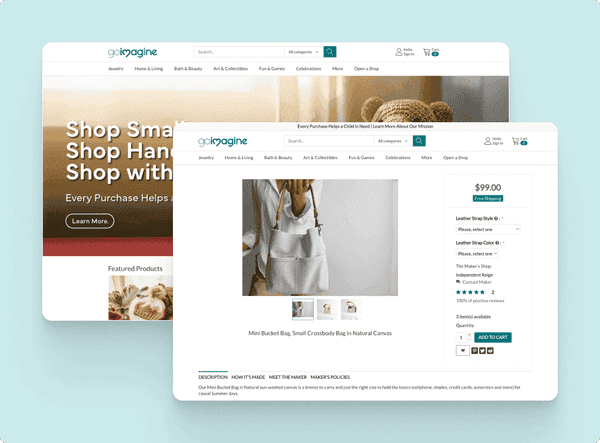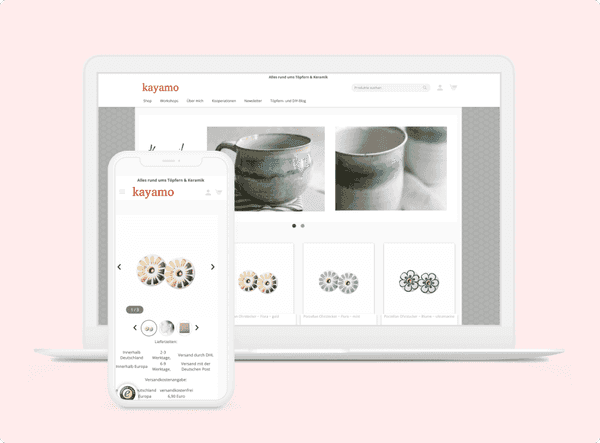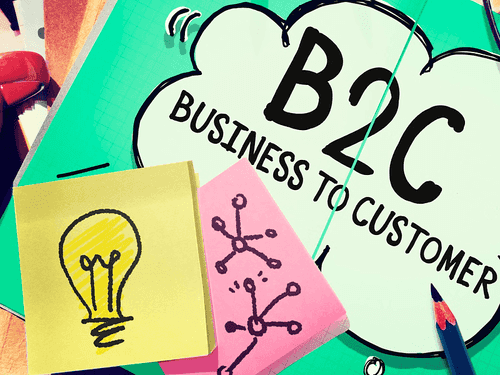B2B & B2C
Marketplace Development
from MVP to Enterprise
Build your online marketplace with an award-winning online sales solution designed by eCommerce experts. Automate routine tasks to expand your product range, streamline order processing, and efficiently manage marketing campaigns.
| cs | cart |
| 4,7 / 5 оn SourceForge |
| 4,8 / 5 оn G2 |

Online Marketplace Development Services
Architecture Design
Marketplace MVP development
E-commerce hosting
System Integration
Marketplace web app development
Mobile marketplace development
UI/UX design
SEO strategy
Key Industries We Serve
We will find dedicated marketplace website developers and other specialists in your area with relevant knowledge, grade and proven experience.
Types of Marketplaces
Selling online has never been easier. Leverage our eCommerce marketplace development expertise to achieve high conversion, intelligent automation, increased security and create a profitable online marketplace for every business model.
Start selling your goods and services immediately with B2B marketplace. Connect with other organizations and do business in one place by syncing your wholesale, payments, catalogs, order management, ERP and CRM systems.
Attract your target audience with advanced marketing tools and increase conversion with elaborate customer journey maps and convenient checkout process of B2C marketplace.
Focus on software development and growth of your P2P marketplace. Leave storage and delivery to the users and keep upgrading the platform with Simtech professionals.
Give every user an opportunity to run their own eCommerce Store with C2C marketplace. Make it easy for them to register and set up the storefront to present their goods.
Offer buyers an exceptional user experience, provide sellers with optimized catalog management. Easily control delivery and payment systems and scale your business effortlessly.
Build a platform for professionals to expose their skills. Let users search for services and offer them, engage with a reliable messaging system, and rate and review their experience.
Create your own NFT marketplace and generate income by selling various digital items, ranging from artwork to collectible sports cards.
Create a platform that allows multiple sellers to list and sell their products or services and earn on commissions or subscription fees.
Marketplace Development Solutions
Platform-Based Marketplace
Quick launch of MVP for first sales and custom marketplace development for complex projects on PHP-based eCommerce platforms including CS‑Cart and Multi-Vendor.
Marketplace From Scratch
Ideal for enterprise-level companies and complex projects with custom design and integration of CRM/ERP-systems. Includes Laravel development + headless approach
Marketplace Replatforming
Seamless website replatforming from outdated CMS and self-written software to a fully-fledged marketplace eCommerce platform without downtime and loss of data.
Omnichannel Marketplace
Automation of business processes and building an unified marketplace ecosystem of online and offline sales points
Mobile & PWA Development
Web development of mobile apps, responsive websites and PWA solutions for mobile commerce. Increased sales on all devices
Need more details?
Contact our team for a free consultation on eCommerce development for your project!
Platform Development vs Development from Scratch
CS-Cart Multi-Vendor platform
CS-Cart is among the most feature-packed open-source shopping carts for and marketplaces worldwide. Fully customizable, the platform suits B2B, B2C, B2B/B2C and B2G businesses and can combine online and offline sales in one powerful ecosystem. CS-Cart supports up to 200,000 products out of the box, there is a highload marketplace development solution that allows you to increase the load to 1-2 million SKUs.
Laravel Development
The Laravel framework is designed for creating complex applications and websites with custom design and mechanics. It streamlines the software development process, including simplified authentication, routing, session management, caching, application architecture, and database operations. We recommend the Laravel framework as one of the key technologies for building enterprise marketplace portals for our clients.
Not sure what technological stack is optimal for your project?
Contact our team to get a free consultation in marketplace development
Marketplace Features
We focus on the customer’s business goals and do not overload the project with unnecessary functions when creating an eCommerce marketplace. The basic features of a two-sided marketplace applies to both buyers and sellers, giving them only the tools they need. We advise you to start marketplace website development with creating a minimum viable product. Additional functionality can be added as your project grows.
Personal profile | |
Search and filtering | |
Favorites and wishlists | |
Ratings and reviews | |
Shopping cart | |
| Order management and history |
Marketing Tools | |
Shipping Calculators | |
Analytics and reports | |
Products creation | |
Bulk edit | |
Notifications and messaging | |
Price and discount management | |
| Tax calculation |
Account management | |
| Vendor onboarding | |
| Vendor administration | |
| Category and listing management | |
| Offers and discounts management | |
| Payout management |
Technology Stack
Over the years working with multiple eCommerce projects we put together a list of efficient tools, frameworks, apps and services. With high-quality technical solutions we are able to build unique, reliable, scalable, and trendy software.
PHP
Laravel
Node.js
Python
Java
C
C++
C#
Ruby
Ruby on Rails
Featured Marketplaces
We develop high-quality custom multivendor eCommerce websites for our clients. The main purpose of our marketplace development company is to provide first-rate services considering all the requirements and your business needs. Some of our works are presented below.

Charity marketplace with customized admin panel
Developed new rules for listing products and customized the vendor panel for easy onboarding.

Jewelry marketplace with custom design
Improved the look-n-feel, performance and ratings on SERPs of a custom online store.

Beauty store replatformed to CS-Cart
Migrated online store from Magento to CS-Cart an added quick order and customized promo blocks for better user experience.

Fashion store with improved performance
Made a comprehensive performance analysis and improved load speed on mobile devices.
Reviews
Why Develop eCommerce Marketplace With Us
Entrust your marketplace application development to a professional software development company!
Integrated supportEnd-to-end concept from analysis and design to the development and maintenance of infrastructure for eCommerce. |
Data-driven approachChoice of solutions and tools is based on our profound knowledge of eCommerce market players needs. |
Global experienceWe know how to implement the advanced eCommerce technologies in your local realities. Stay ahead of your competitors with us! |
How work our Marketplace Development Company
Discovery phase
Collect project information: ideas, goals, market analysis, and tech stack for existing projects
Architecture design
Define requirements and features of the project and make a detailed project specification
UX concept
UI/UX specialists work on the project look and feel for trendy design and better user experience
Development
Backend and frontend developers start development based on technical specification and road map
Testing and QA
QA tests the developed functionality and ensures the interface is intuitive and user-friendly
Deployment & Support
After deployment, we can support you in infrastructure management and project development
Blog
Marketplace app development insights
FAQs
What features to include in a marketplace?
When answering this question, you should understand that any feature your marketplace has should be valuable for users and make their engagement with the platform more convenient. We offer the full scope of ecommerce marketplace website development services. For starters, focus on the major functions every multi-vendor marketplace must have:
- Signup process
- Vendor dashboard
- Search and filtering
- Payment gateways
- Wishlist and shopping cart
- Analytics dashboard
- Messaging and reviews
How long does it take to create an online marketplace?
It takes about 2 months to develop an MVP — a minimum viable product. The first version of the marketplace will include the basic functionalities. It is enough to launch and test the platform with real users.
Generally, it takes around 2-6 months to finalize and release the project. If you need marketplace portal development with B2B features the duration of your project might be longer.
How much does it cost to create a custom marketplace?
It is almost impossible to give an exact price. We encourage individual approach and estimate each project with its requirements and tasks on an individual basis. Development from scratch or based on an existing solution, integrations and customizations, and design are all factors to consider. B2B marketplace development is usually more expensive that B2C marketplace development. If you already have an idea, don’t hesitate to book a call with us to get a rough estimate.
How do marketplaces work? What is a marketplace example?
A marketplace is an online platform that brings together vendors and buyers. Sellers display their products or services on the platform available for purchase. Buyers find the needed item, add it to the shopping cart and process to checkout. The marketplace integrated with payment gateways and shipping services allows customers to select the most convenient way of payment and delivery.
Popular examples of marketplaces are Amazon, AliExpress, and eBay. We offer custom enterprise marketplace development to meet your any business requirements.
How do I make a profit from the marketplace?
An owner of the multi-vendor marketplace acts as an intermediary between buyers and sellers. Here’s how you can make money: get a commission from every transaction made, charge sellers a fee for every ad posted, implement a subscription model, and charge users monthly or yearly fees.














